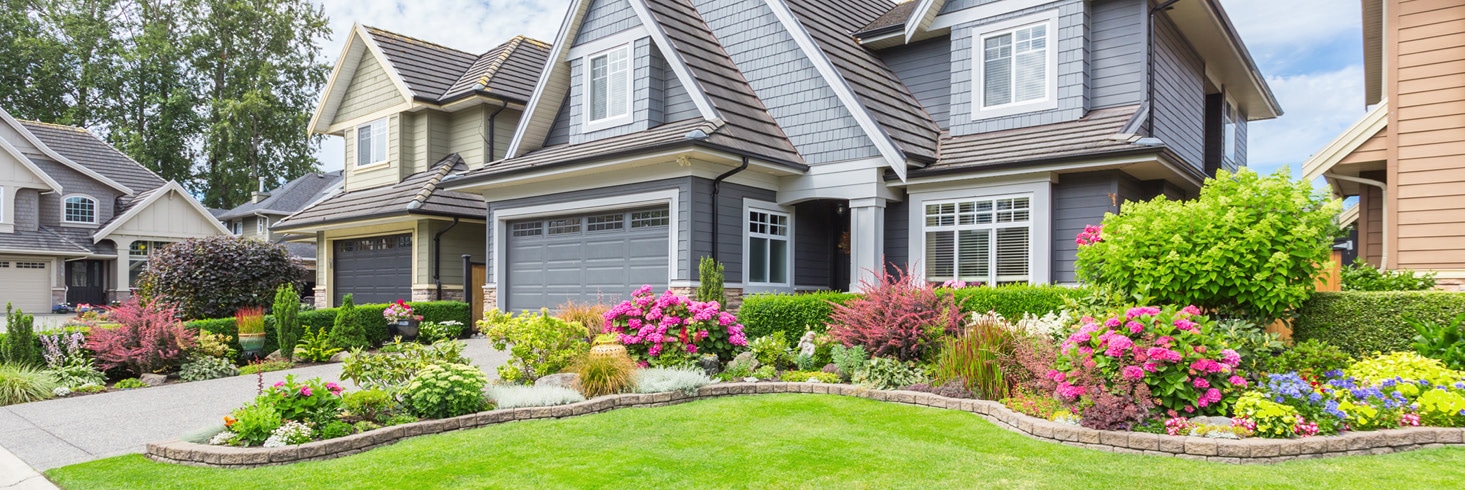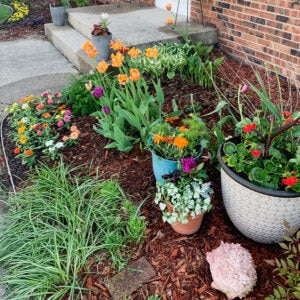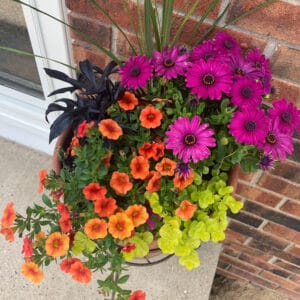
Home Owner’s Guide to Gardening
It’s finally warming up in Michigan so that means it’s planting season! Gardens add so much life, color, and character to your home — not to mention it’s a major curb appeal boost. Personalizing your home’s outdoor landscaping is also a great way to encourage you to spend more time outdoors this summer. We know not everyone has a green thumb, so we put together a list of gardening tips & tricks, as well as some local nurseries to visit, to help make your gardening smooth this spring.
Plan & Prep
LOCATION & LIGHT
Are the areas you plan to plant in full sun, part sun, or full shade? Different plants like different amounts of light. For edible gardens and most flowers, you’ll need full sun, whereas plants like hostas and ferns prefer more shade. Southern facing gardens usually get the most light throughout the day, while northern facing will receive the least direct sun. Also, be sure to take note of any large trees that could shade your gardens.

PLOTS OR POTS
Does your home’s landscaping include garden plots in the ground? Planting in containers/pots is a great alternative, or addition to, in-ground garden beds. Whether you’re planting in the ground or in containers, before you head to the greenhouse, it’s helpful to make a list of all the spots you need plants.
SOIL
Before you get to planting, don’t forget about your soil! To prep your soil, you’ll want to make sure it’s loose and clear of any rocks or debris so the roots of your plants can reach deep enough. The quality of the soil is also important for both drainage and nutrient supply. The easiest way you can improve the quality of your soil by adding organic matter, such as compost.
Pick Your Plants
PERENNIALS OR ANNUALS
Are you looking for a long-term garden solution, or seasonal plants? Perennials are plants that come back year after year, and while they may be more costly up-front, they’ll save you work and money in the long run. Perennials are best for in-ground planting. Annuals are plants that only last one season, but often bloom for a longer period of time, providing more color throughout the summer. Annuals can be used both in-ground and in pots, and can even be combined with perennial gardens.
PLANTING THE PERFECT POT
If you’re planting flowers in containers, a good rule of thumb to follow is including a combination of thrillers, spillers, and fillers. Start with a thriller, or a focal point plant — usually something colorful and tall. Next add fillers to add texture and complement the color of your thriller. Finish with your spillers, or plants that flow over the edges of the container, such as vines.

Let’s Plant
PICK THE RIGHT DAY
If possible, plant your garden on a dry, cloudy day. New plants take best to cool soil, so the less sun the better. It’s also best to plant in moist but not drenched soil, so rain showers after planting are better than before.
HEIGHT MATTERS
If your garden is focused on in-ground plots, make sure to take into account the heights your plants are going to grow to. If your garden borders your home, make sure the tallest plants are in the back, both so you can see all your beautiful blooms, and to avoid blocking the sun from shorter plants.
ROOM TO GROW
It’s easy to over-crowd your garden in an attempt to pack in the color but, it’s important to give each plant enough space to grow. This is especially important when planting perennials that often take up to three years to reach their mature size.
Keep Them Alive
WATER
The single most important part to keeping your plants alive is keeping them watered. It is best to fully soak your plants once a week to fully saturate their roots, rather than give them frequent small waterings that only moisten the top layer of soil. Try to avoid watering during the hottest parts of the day, and if you’re short on time, sprinklers or well-placed soaker hoses are your best friends!
MULCH
While mulch is often thought of as an aesthetic element, it actually does a lot of work for your garden. Adding mulch around your plants helps reduce moisture loss through evaporation, protects the soil from the heat of the sun, and keeps weeds at bay.
DEADHEAD
Removing old blooms, or deadheading, your annual flowers signals for them to produce more flowers. This help keeps your garden colorful all season.
FERTILIZE
In addition to the nutrients in your soil, plants often need an extra boost of fertilizer to reach their full potential. Do make sure to fertilize carefully and according to the directions — if you apply too much fertilizer, you can burn the flower’s root.
Some of our Favorite Local Nurseries and Greenhouses:
For more ways you can boost your home’s curb appeal, check out our blog: Summer Projects to Increase Your Home’s Value
Gardens add so much life, color, character, and curb appeal and to your home.


